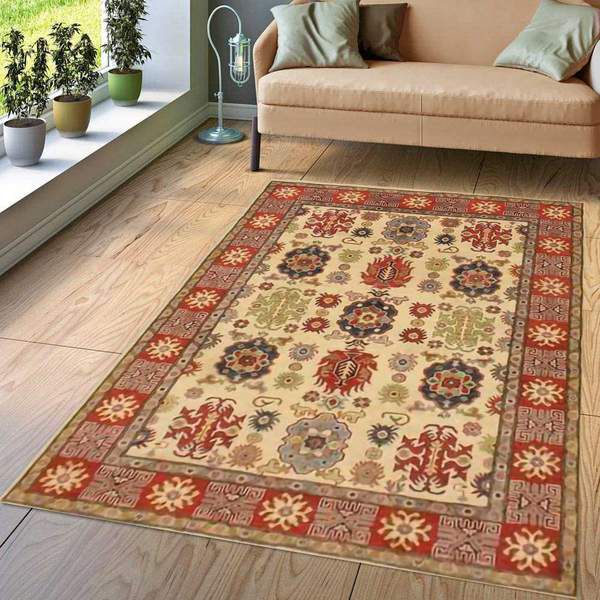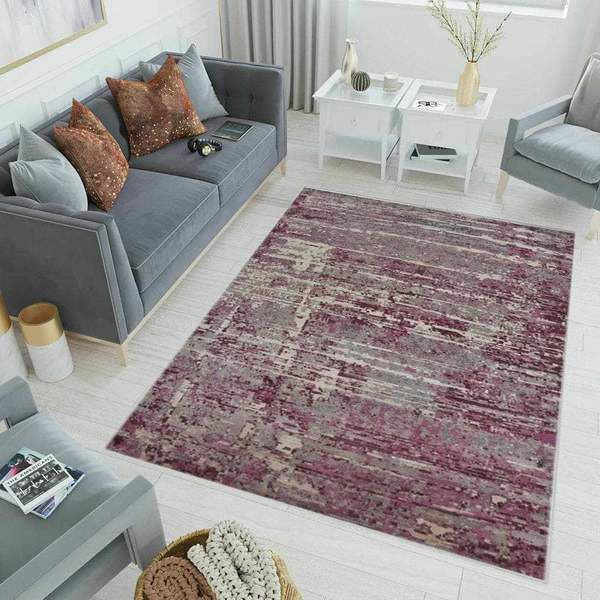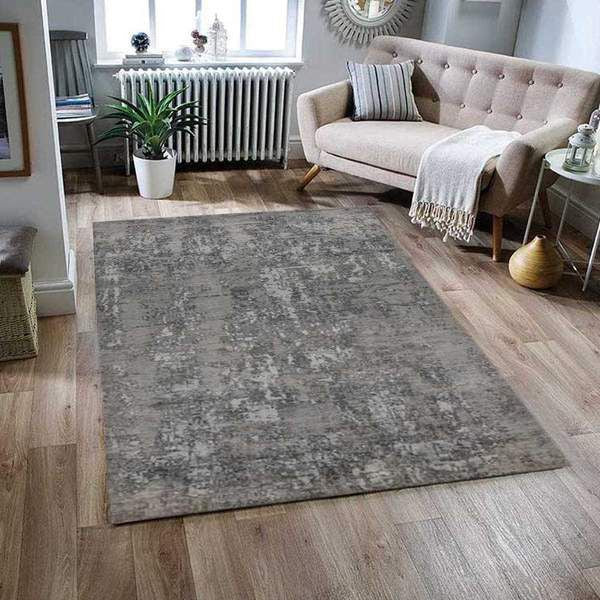Oriental wool rugs are expensive due to their handmade quality. These wool rugs are best known for their hand-knotted construction. Also, they are made by knotting strands of wool, silk, and sometimes cotton. These are also known for their variety in size. There is a rug that will fit any room in your home perfectly! Oriental rugs can be distinguished from other types of carpets because they have a shaggy look to them due to the higher number of knots per square inch.
There are various solutions to this question: some are cultural, others are art-historical, and some are just pragmatic. Let's turn the carpet over and see what goes on behind the scenes of oriental wool rug prices.

Wool Rugs Are Expensive Rugs
The Culture of Oriental Wool Rugs
We often take the forces of globalization for granted in today's interconnected, networked society. Culture is no longer constrained by location; ideas, art, and commodities freely travel throughout the world, unrestricted by physical distance. Globalization has its origins in history, but it is most generally linked to the Renaissance when communication and trade between distant parts of the globe began to pick up speed. This extensive cultural contact sparked an interest in all things Eastern in Europe, a phenomenon historians refer to as Orientalism. Oriental wool rugs first appeared in European religious art in the 14th century. Oriental rugs were frequently used under the feet of the subjects in portraits of royalty and biblical figures. These carpets, like the gilded thrones and crowns above them, were most likely symbols of wealth and power. Renaissance paintings of oriental wool rugs were perfectly detailed and astonishingly true to the subtle designs of the carpets themselves. Artists admire art, and Renaissance paintings of oriental wool rugs were finely detailed and remarkably true to the nuanced designs of the carpets themselves. The beauty of these fabrics, as shown in European painting, sparked a worldwide interest in oriental rugs, which continues to this day.

Wool Rugs: Form and Function
Although the beginnings of oriental carpet weaving are lost in the mists of time, it's simple to understand the practical necessity of rugs in ancient Middle Eastern peoples' nomadic lifestyles. The original carpet weavers simply used the materials at hand to solve life's petty challenges as they traversed harsh desert areas with herds of goats. Wool was presumably plentiful among these nomads, so weaving it into comfy, portable floor coverings was a natural choice. Certain techniques and patterns were passed down through the generations, mutating and growing into the various canon of rug designs that now delight the eyes and feet of people all over the world. Oriental rugs, like furniture or pottery, are a seamless blend of form and function, symbolic of the uniquely human ability to gently and wonderfully solve difficulties. The price of an oriental wool rug is consequently determined by its craftsmanship and visual appeal, as well as its utilitarian purpose of providing soft, yet durable indoor carpeting. These carpets simultaneously satisfy two essential human desires: comfort and beauty.

Factors of Rug Pricing
Now that we've covered the cultural, historical, and artistic significance of wool carpets, let's get down to business and explain why they're so pricey. The following are the main factors that influence the pricing of a wool rug:
- Size
- Knot Count
- Materials
- Origin
- Age
We'll go a little deeper into these themes now so you can completely comprehend why wool rugs are so pricey!

Rug Size Matters
The amount of material, time, and work required to make a rug is directly proportional to its size. The more expensive a rug is, the larger it is. Rug prices are frequently calculated based on the number of knot counts in a square inch, making it very straightforward to calculate the cost of a rug. To do so, look at the back of a rug and count how many knots you see within 1 inch with a tape measure. This can range from 9 to 16 knots or greater for high-quality oriental wool rugs.

Rug Knots - It's Our Name For a Reason
The amount of hand-tied wool knots per square inch of rug surface is referred to as the knot count. Lower knot counts indicate a coarser texture; greater knot counts indicate a soft, sumptuous feel and a significantly higher price. The knot count of a rug may not appear to be significant, but it is to us. It's how we figure out how much our carpets cost, how good they are, and what kind of environment they were manufactured in. Consider knot count to be the building bricks of a skyscraper: if even one block is out of place or misaligned, the entire structure will be thrown off. A high-quality rug works in the same way.
Every knot has a significant impact on the rug's final outcome. Only the most expert weavers are capable of weaving tight knots from beginning to end. Unfortunately, this is a dying art form, which contributes to the high cost of oriental rugs. A talented weaver might take years, if not decades, to master a 16-knot count rug. So, if you're looking for a 16-knot count rug, like the one below, you can rest assured that it was created by one of the industry's most skilled weavers! That's something to be proud of.

The Cost of Materials Used to Make a Wool Rug
Wool: Wool rug quality, which is decided by wool quality, has an impact on the ultimate pricing. Wool's fineness (or coarseness) is measured in microns, with ultra-fine merino wool ranging from 15 microns to the more typical 35 to 45-micron wool used for carpeting. All of our oriental rugs are made with wool from New Zealand, which is imported to Pakistan. We do this for a variety of reasons, including the fact that the quality of wool in Pakistan does not meet our standards, New Zealand has cleaner air, and New Zealand is known for ethically produced wool. Wool is one of the most significant aspects of our carpets since it is the material that you can actually feel. Nothing compares to the luxurious feel of a high-quality wool rug!
Dyes: A wool oriental rug's color palette and quality of dyes are equally significant; a rug with more than 10 colors manufactured with natural vegetable dyes will attract the maximum price. Synthetic colors with fewer nuances are less expensive than natural dyes. On our rugs, we believe in utilizing only the most natural vegetable colors. Our professional dyer’s hand blend and hand dye each and every hue. We also employ an old-fashioned dying method in which we boil the water in which we combine the colors in a huge pot over an open fire. We are one-of-a-kind in this regard, and we take pride in the fact that we still create rugs the way they were made centuries ago.
Supplies: Our weavers utilize a variety of tools to aid them in the weaving process. These are crucial tools that we take into account during the rug-making process. When it comes to procuring materials for our carpets, even simple details like the brooms we use to wash our oriental rugs are not overlooked.
Workspace: We believe your workspace is significant, even though it isn't a material used to manufacture a rug. We want our weavers to recognize and appreciate their artistic abilities. It is at their expense that we are here. That is why we work hard to provide a tranquil and creative environment for our weavers. Unlike many of our competitors, who accept child labor and inhumane working conditions, we are aiming to eliminate these variables and put a stop to these heinous practices. We are a proud supporter of the Care and Fair Organization, which works to ensure that families of rug weavers receive the recompense they deserve from their employer, which is frequently one of our competitors. We also collaborate closely with The Citizens Foundation, a non-profit organization dedicated to educating children in Pakistan's rural areas. Every time you buy a rug, we automatically donate 15% of the price to The Citizens Foundation. You may support our cause right now by purchasing a rug!

How Rug Origin Impacts Price
Rug-making is a skill that is practiced in some parts of the world. Iran, Pakistan, Afghanistan, India, Turkey, China, and Nepal are just a few of the countries where the rug industry thrives. Certain regions are well-known for creating superior rugs. Because of the lessons of generational weavers, this is the case. Rug-making began in Egypt and expanded to neighboring countries. These areas will be home to some of the wisest and most skilled weavers. Their abilities were passed down to younger generations who stayed in the same place, resulting in specific countries excelling at rug weaving. As a result of the weaver's expertise, the provenance of where a rug was manufactured is a significant influence in price.

Rug Age: It's Like Fine Wine
Oriental wool carpets, unlike other items, can appreciate in value over time. It's similar to excellent wine or a valuable collectible item like baseball cards. In reality, oriental carpets frequently sell for hundreds of dollars at auctions, such as the Clark Sickle-Leaf carpet we highlighted before! Many people consider purchasing an oriental rug to be an investment, and they are correct! If you can find an oriental rug at a reasonable price, you can make a lot of money with it over time. This is also taking into account the fact that you will be able to display the rug in your home, which is far superior to a bank investment. It's difficult to tell how old an oriental rug is. If the rug's volume has worn down, this is one of the important indicators. Wool, you see, is a natural substance found on the planet, and it does disintegrate over time. Because the wool has disintegrated, areas of the back canvas will show up on a 50-year-old rug. You'll also see that the rug's design and dye have begun to leave an imprint on the canvas because it has settled in so deeply over time. Our Vintage Overdyed Rugs Collection has some of our oldest carpets. This collection offers vintage Persian rugs that have been mended and colored to bring them back to life. These are extremely valuable rugs! Antique carpets are those that are over 100 years old; semi-antique and vintage rugs are those that are 50 to 70 years old.
The world of wool oriental carpets can be frightening at first, but don't be put off by the abundance of choices. While pricing can be broken down into its component parts, it ultimately boils down to how much you're willing to pay for a rug you adore.

Here are answers to some commonly asked questions by our customers about why are oriental rugs expensive in 2024
1. Is it true that synthetic rugs are better than natural rugs?
Natural rugs are more expensive and less durable than synthetic rugs. They're a wonderful choice for people with dogs or children because they don't easily absorb stains and last longer. Synthetic fibers, on the other hand, have a lower softness than natural wool from sheep's fleece, which is significantly softer. Synthetic rugs normally last for three to five years. Small wool and synthetic rugs are both simple to clean. Wool carpet is often softer and more opulent than polypropylene carpet. Wool rugs are flame resistant, however, synthetic rugs may be highly flammable due to chemicals.
2. When it comes to silk rugs, how long do they last?
Silk rugs are extremely long-lasting. In fact, of all sorts of floor coverings, silk rugs are the most durable. If they aren't ripped or discolored too excessively, they can last for 50 to 100 years. Synthetic and wool rugs, on the other hand, may wear out in six to five years, depending on how much use they experience. These rugs are the most durable when they are in low-traffic areas and when the quality is high. Natural silk carpets are durable, although not as durable as synthetic or woolen rugs. If you purchase them from a reliable source that guarantees their longevity, your rug can last for up to two decades before needing to be replaced.
3. Is it worth it to invest in a wool oriental rug?
Wool Oriental rugs are well worth the money. They can last for more than 50 years if obtained from a trustworthy source and properly cared for. Oriental wool rugs are among the most long-lasting designs available. They can be composed of natural or synthetic materials, and when vacuumed regularly, they can endure anywhere from 50 to 100 years. These are handmade rugs offering a unique and attractive appearance. Oriental wool rugs are expensive, but they're a good investment. If purchased from a reputable source and vacuumed correctly, these rugs can last up to 100 years or longer. Their handmade patterns also offer an artistic touch to your home!
4. What makes Persian rugs unique?
A Persian rug is unique because it is handmade and uses only the finest materials. They are made from high-quality material and crafted by hand, making them a great investment for decades or even longer! If purchased from a reputable source and properly cared for, these durable rugs can last up to 100 years. These rugs are a square foot of art, each with a unique design and pattern. The most expensive Persian rug is the Arad collection, which is made of silk and has more than 500 million knots within its design! Their durability makes them a great investment for homes. If cared for correctly, these rugs can last up to 100 years or longer! Their handmade patterns also offer an artistic touch to your home's interior decor.
5. When it comes to vintage Turkish rugs, how old are they?
Vintage Turkish rugs are antique rugs that have been made in or before the 1950s. These rugs are known for their symmetrical patterns and intricate details that give them a sense of history. These rugs are one of the best purchases you can make because they are usable for many different purposes. Turkish rugs are created from the finest materials available. Cotton and wool-cotton blends are far less valuable than hand-spun wool and silk. You can tell the difference between a silk and a cotton rug right away.
6. What is the difference between a handmade rug and a machine-made rug?
Handmade rugs are distinguished from machine-made rugs by the fact that they are created by hand. Because of the level of detail in their design, handcrafted wool or silk oriental carpets will be of higher quality than machine-woven equivalents. Hundreds of hours of meticulous knot-tying are required to construct a genuinely authentic item. Asymmetrical design and a completely straight edge characterize a machine-made rug. Because a handmade rug is designed by hand, the knots on it may vary in size, shape, and color, resulting in minor discrepancies in its look.
We hope you now know all of the facts on why oriental wool carpets are so pricey in 2024. Remember to check out RugKnots' selection of oriental wool rugs, and best of luck with your next rug purchase. Our rugs are ideal for decorating your home. If you have any questions, please contact us at info@rugknots.com or call us at (240) 252-5452., and our team will be pleased to assist you.


Do you purchase Persian carpets? I have a large Kerwin which has been in out possession for 50 years and at least 30+ yrs with Grandmother..large floral on off white background 12×8...